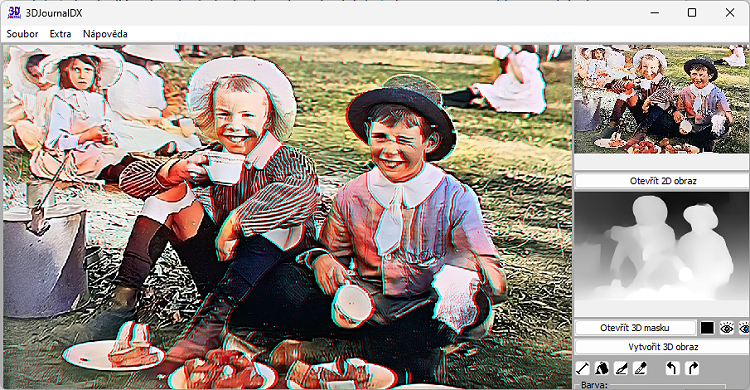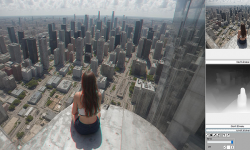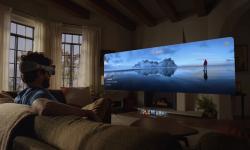Since we're going to convert older flat photographs into spatial ones, let's pick one that's really old as an example. Fortunately, Museums Victoria has some, and this one (above) from 1910 with two boys - titled Frank Stephenson enjoying afternoon tea with his brother, Merrigum, near Shepparton, which is in the Public Domain - might serve us well.
The old photo can also be coloured and enlarged first with the help of AI.
We could use it as it is, but if we're going to play with it... So how about colouring it first? We can do that in the Colorize tool on Hotpot.ai, which is free for non-commercial use. And let's make it a little bigger, this time on Upscale Media.
Converting photography to 3D
And now it's time for the promised 3D conversion. We'll use MiDaS artificial intelligence (AI), which is available online here. It's not currently in a fully up-to-date version, but unlike the currently available alternatives, this one is fully functional and fast to use.
Simply upload a photo, press the Submit button and within moments you have a map that tells you via brightness how far away any part of the image is from the lens. We'll download that.
Now all you have to do is upload the photo and the depth map to 3DJournal DX and press the Create 3D Image button. And you have a stereoscopic photo in anaglyph format, which you can of course also save as cross-eye images.

Photo converted to 3D in 3DJournal DX
It should be added that 3DJournal DX, which you can download in our Software section, is already a rather old program, so it doesn't use any artificial intelligence to calculate the background - and let's be honest, AI could certainly be useful here. In the tested photo, the depth is visible, but some imperfections are also evident - caused both by inaccuracies in the depth map and just the final calculations. Even so, the above procedure is considerably easier, more reliable and faster than those available just a few years ago. Hopefully, some artificial intelligence will emerge in the next few months to make the 2D to 3D conversion even easier and better.
3DJournal, January 2024





